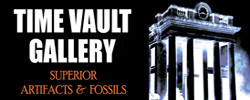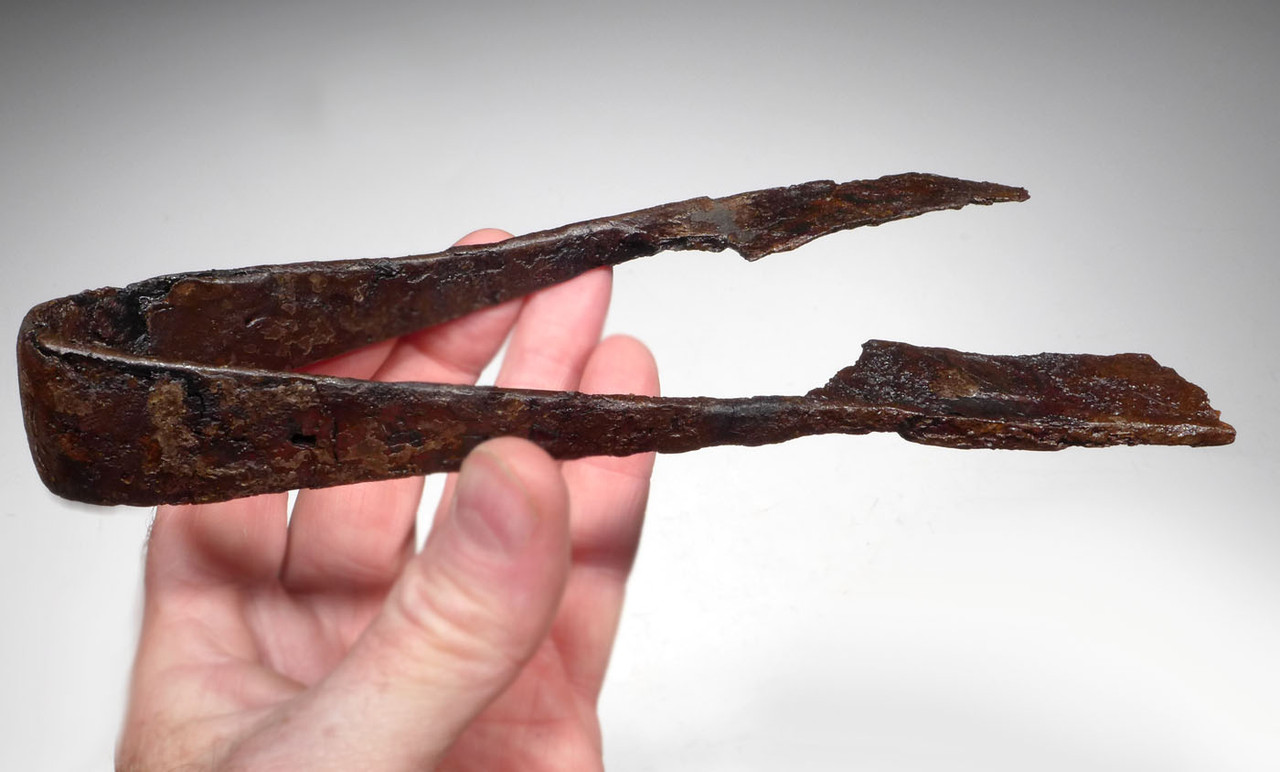Product Description
Dating back to a time before Christ, these ancient iron barber cutting shears are a wonderful artifact of everyday ancient life of the ancient Celts of Europe. Being made of iron, they did not fully survive the ravages of over 2000 years in the ground but they are nearly complete, only missing the very tips of each end of the spring scissors. The spring joint is repaired so they cannot be flexed as doing so will break the repair. Spring shears like these were used to cut the hair of people as well as animals such as horse-grooming. They could have also been used to cut hide and cloth but were most likely used for hair cutting.
Ancient Celtic iron rarely survives the elements and complete artifacts are very rare. Laws in Europe have forbade any modern prospecting or metal-detecting for several decades, making the acquisition of these rare objects only possible from private collections that pre-date local restrictions, as this one has come from.
Unlike most metal artifacts sold on the market that are untreated and uncleaned, our specimens our properly cleaned, inspected and conserved in our museum conservation lab prior to being offered for sale to our clients. If ancient metal is NOT treated and stabilized correctly, IT WILL CONTINUE TO DISINTEGRATE AND CORRODE, AND COULD EVENTUALLY FALL APART INTO PIECES.
SEE MORE ANCIENT CELTIC ARTIFACTS
HISTORY
Around 2000 B.C., barbarian Celtic tribes invaded Europe. They first inhabited regions across Eastern Europe now known as Hungary, Bulgaria, Romania and the Balkans. During the Bronze Age, they move westward and by the Iron Age in the 8th to 5th centuries BC, these tribes make their homes in what is now southwest Germany, eastern France and parts of Switzerland and Austria. This era is known as the Hallstatt period named after a Celtic archaeological type-site in a lakeside village in Austria. After that, in the La Tene period, western Europe becomes heavily occupied by the Celts as they invade much of Germany, France, the Iberian Peninsula (Spain and Portugal), the British Islands and Ireland. After this time, Celtic tribes spread eastward again, moving into northern Italy, Bohemia, Silesia, the Balkans and even into present day Turkey with a tribe called the Galatians establishing a Celtic city called Galatia. During the 1st century BC, the Celts were at the height of their power and were the dominant ethnic group in much of Europe, even ruling over the Germanic tribes. Among the many military victories the ancient Celts can lay claim to are the sacking of the cities of Rome and Delphi.
The Celts were largely a decentralized military aristocracy made up of independent chieftains ruling various geographical regions. They were famous to fight just for the sake of fighting and often, they were employed as mercenaries of the great armies of ancient times. Along with their reputations of chivalry, courage and maniacal bravery, their more aggressive tendencies were offset by a great sensitivity to the arts and philosophy. Highly unusual at the time, the Celts viewed both men AND women with equality, holding women in high regard with their matriarchal religion.
One of the famous works the Celts were known for was their masterful works in metal-smithing. Spectacular works can be found all over Europe left behind by Celtic masters in gold, silver, bronze and later, in iron. Much of the influence of Bronze Age European metal ornament lends itself to the influence Celtic master craftspeople.
 US DOLLAR
US DOLLAR
 EURO
EURO
 AUSTRALIAN DOLLAR
AUSTRALIAN DOLLAR
 CANADIAN DOLLAR
CANADIAN DOLLAR
 POUND STERLING
POUND STERLING










